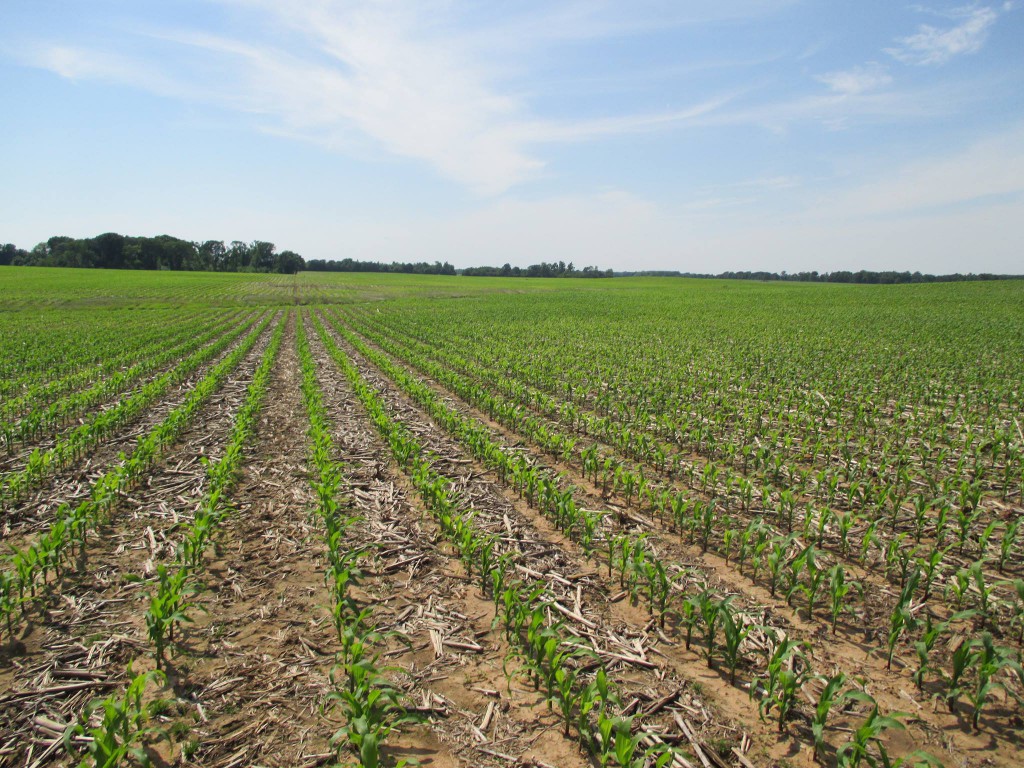Assuming a center pivot is installed to the correct specifications, the efficiency and uniformity of this system will only deteriorate from installment forward. Flowing pressurized water over time will wear away orifice openings and splash plates. An example of worn out 10-year-old rotator plates is shown in Figure 1 below.

When UGA Extension performs a mobile irrigation lab audit, the graph in Figure 2 below represents what is provided back to the producer after the audit.

This is a foot by foot assessment of how uniformly a pivot is applying water down the length of the system. The horizontal x-axis is the measured application rate down the actual length of the pivot plus the water being sprayed by the end gun to the wetted perimeter. The vertical y-axis represents the amount of water caught at a given percentage speed or in an amount of inches applied. Keep in mind, this graph is representing a line segment of a circle. As the pivot rotates in a circle, each area that is applying too much or too little water is doing that all the way around the circle. This correlates back to acres affected. The further down the length of the pivot you are from the center, the greater the effect. As you can see in the graph above, a simple end gun adjustment on the end of the system (which affects the highest number of acres), cleaning out partially stopped up nozzles and replacing nozzles that have malfunctioned could greatly improve the uniformity and the distribution of water on this pivot. It is difficult to visually see a nozzle that is partially clogged. The life span of nozzles depends greatly on use and water quality, but a good rule of thumb is 10-15 years.
So why is this important and what needs to be done next? The pumping cost to the producer will be the same amount of dollars whether he or she applies it uniformly or not. The big point here is the return on investment. If water applied insufficiently in areas across the field, the crop will not yield well and areas overwatered can lead to crop lodging, boll rot, disease, stuck pivots and possible erosion. All leading to decreased revenue or “money left on the table”. Acres that can be affected vary greatly depending on where your issues may appear along the system in conjunction with the system length. On a typical 100-acre irrigated field that may have 10% or less uniformity issues, that would equate to 10 acres affected. Remember, your inputs are the same but your income from potential yield loss can be cut in half on those 10 acres! Pivot uniformity is extremely critical if a farmer is planning to fertigate or chemigate too!
Water is one of our most important natural resources and farmers, along with UGA Extension, strive to be efficient and wise with our water through all kinds of technology. Moisture sensors, irrigation scheduling methods, remote monitoring, and last but not least regular maintenance on irrigation systems are just a few methods! Take the time to perform a uniformity test on aged pivots and address issues that can be addressed. There are times when an audit can reveal some very interesting information. Pump wear has not been mentioned as an issue leading to overall underwatering, but it certainly can be identified with a Mobile Irrigation Audit. If uniformity is in the 70% range with variations all along the pivot, it may be time for a retro fit kit.

Contact your local UGA Extension office for more information on how to perform an audit on your farm, or arrange to have a UGA Extension representative conduct a Mobile Irrigation Lab free of charge.
